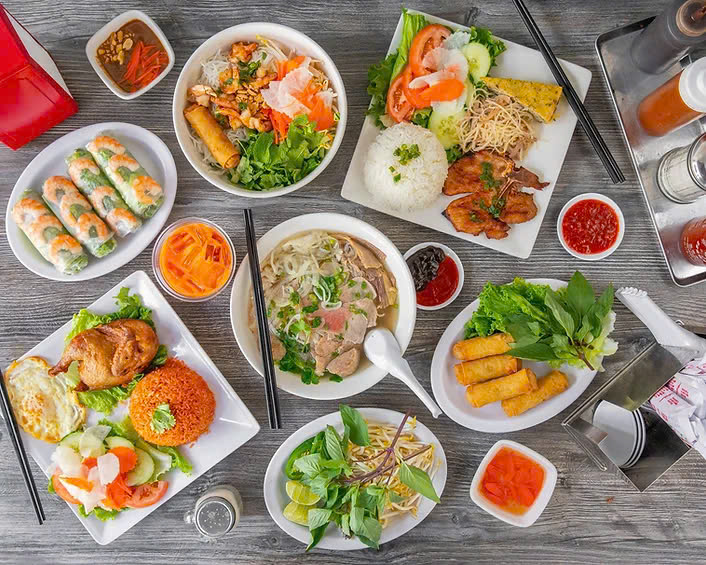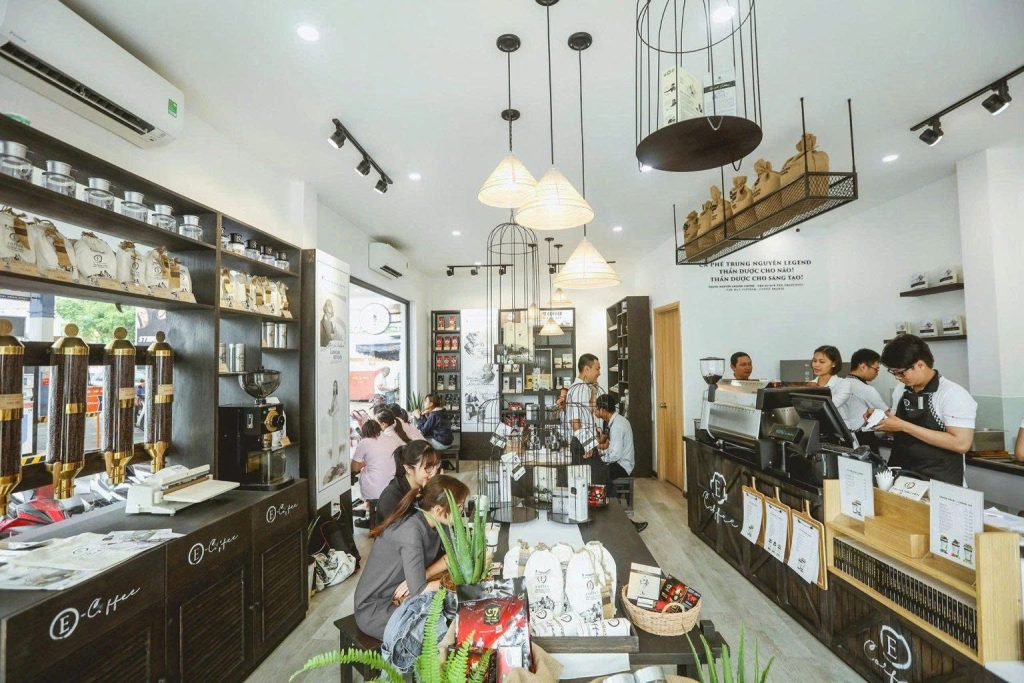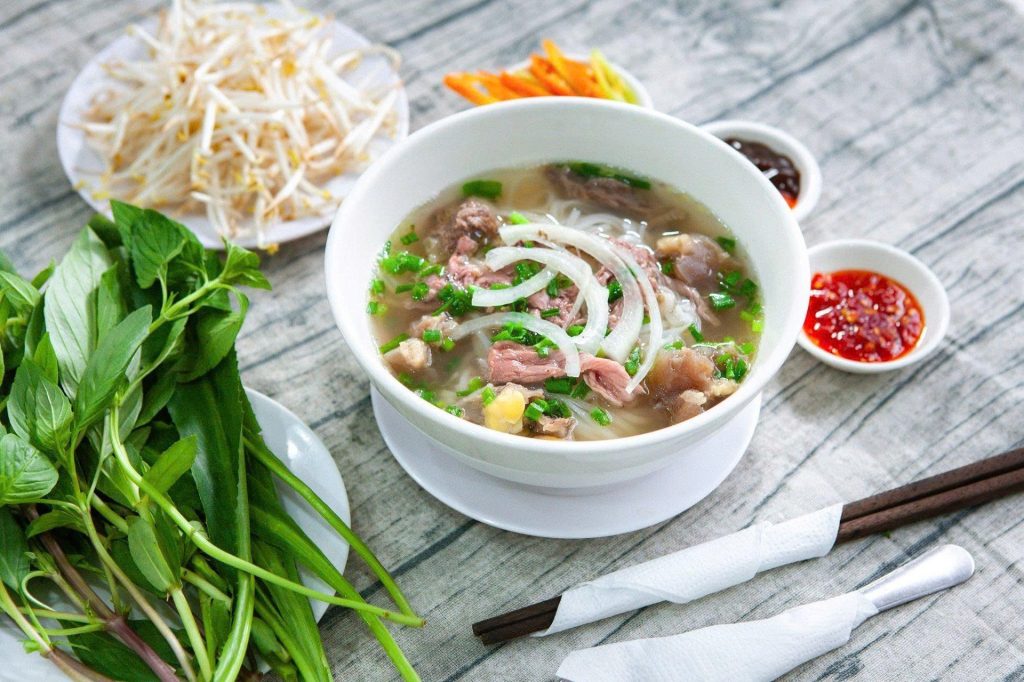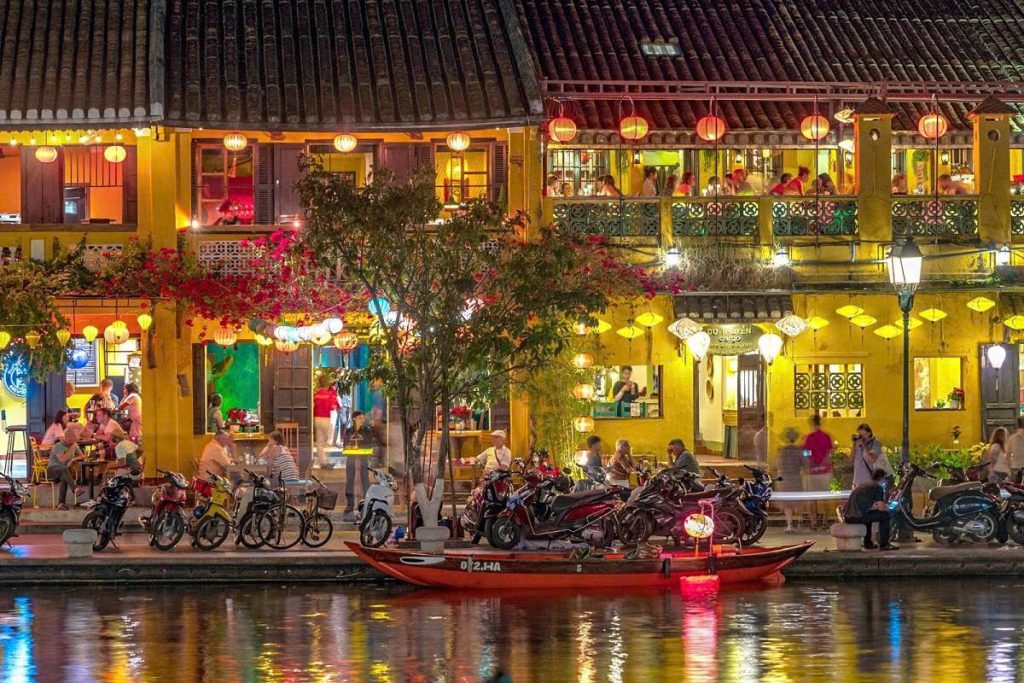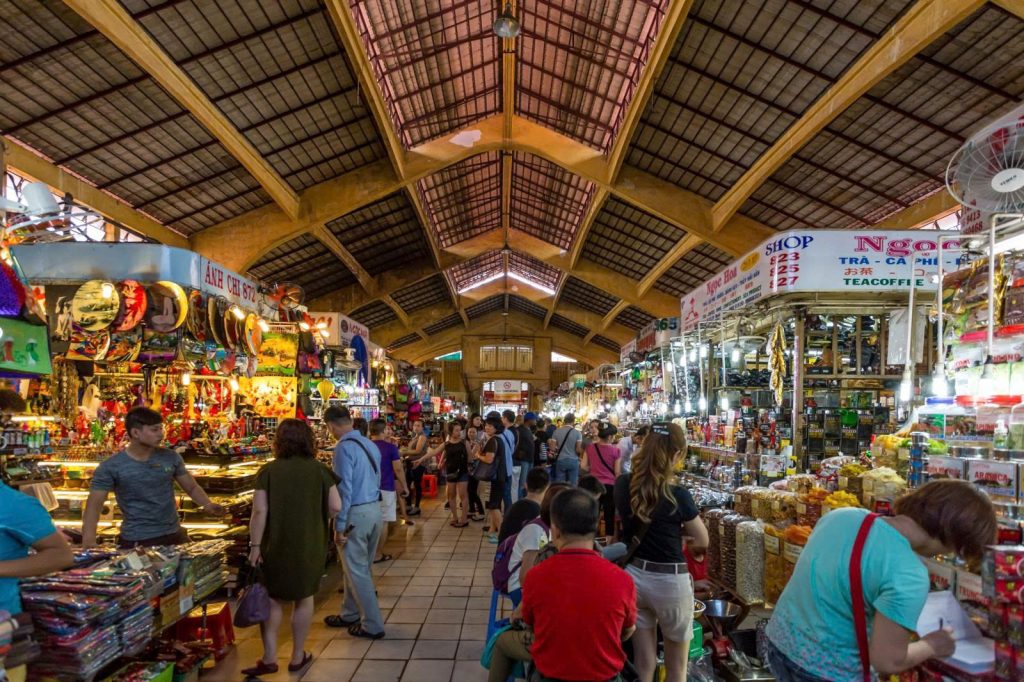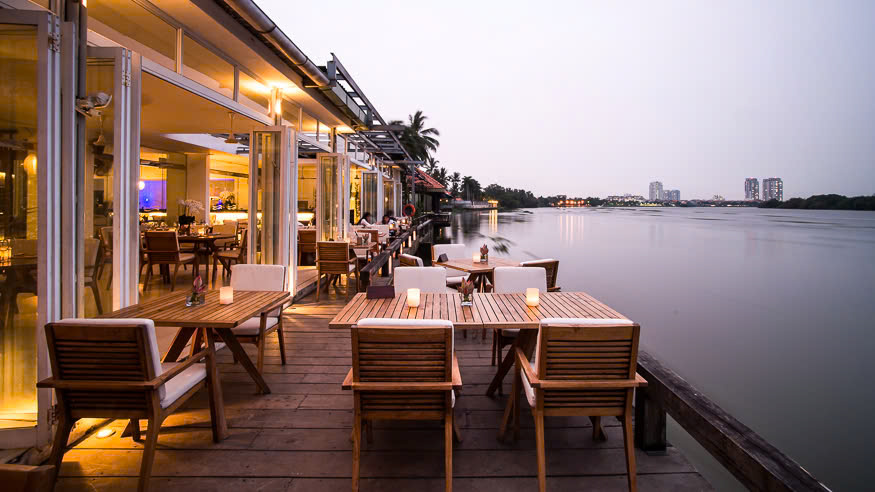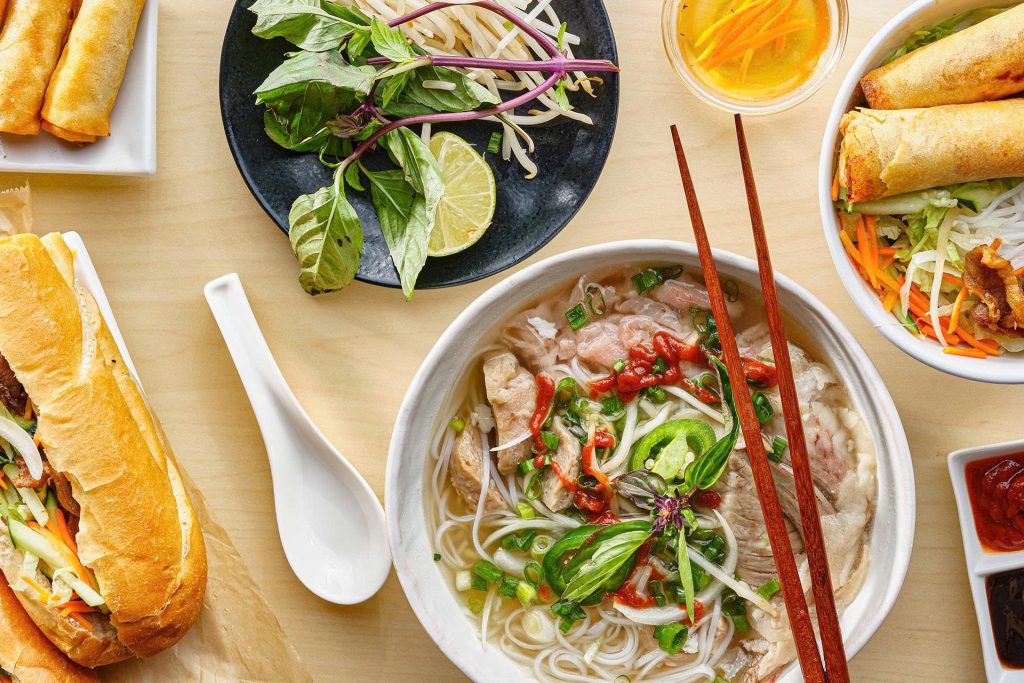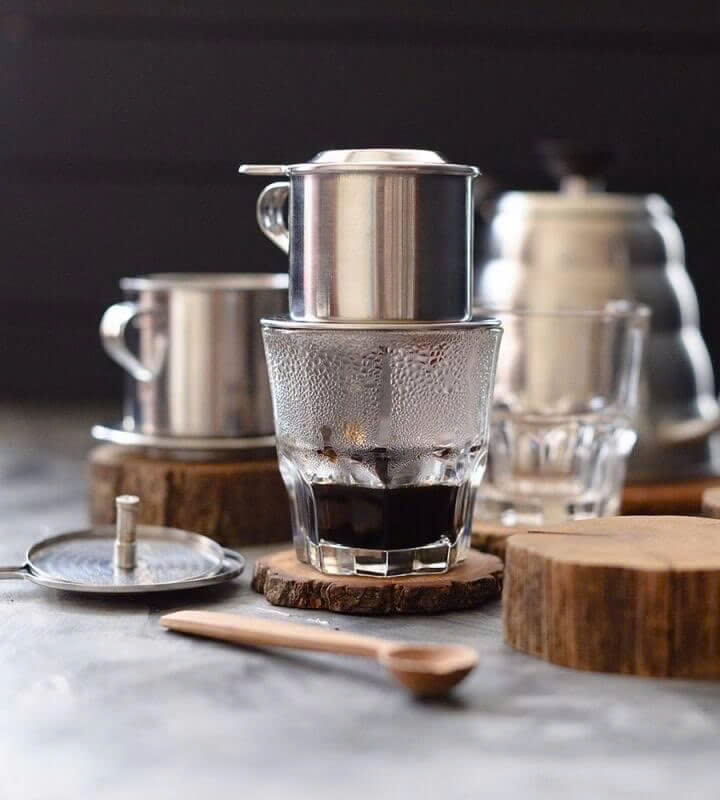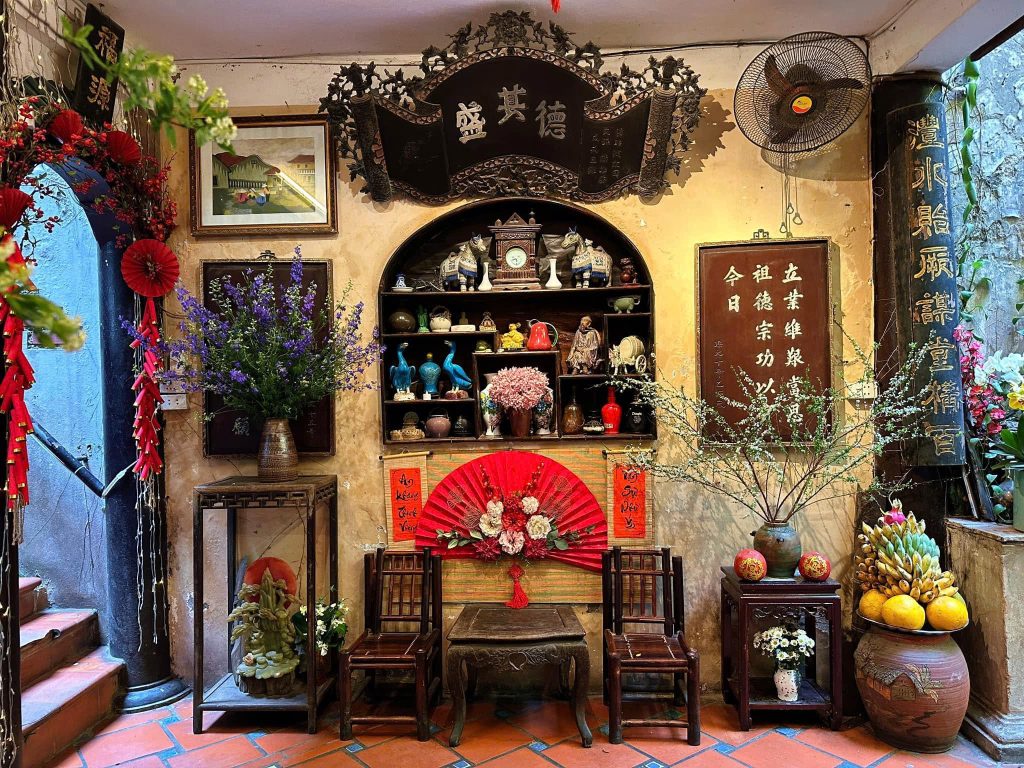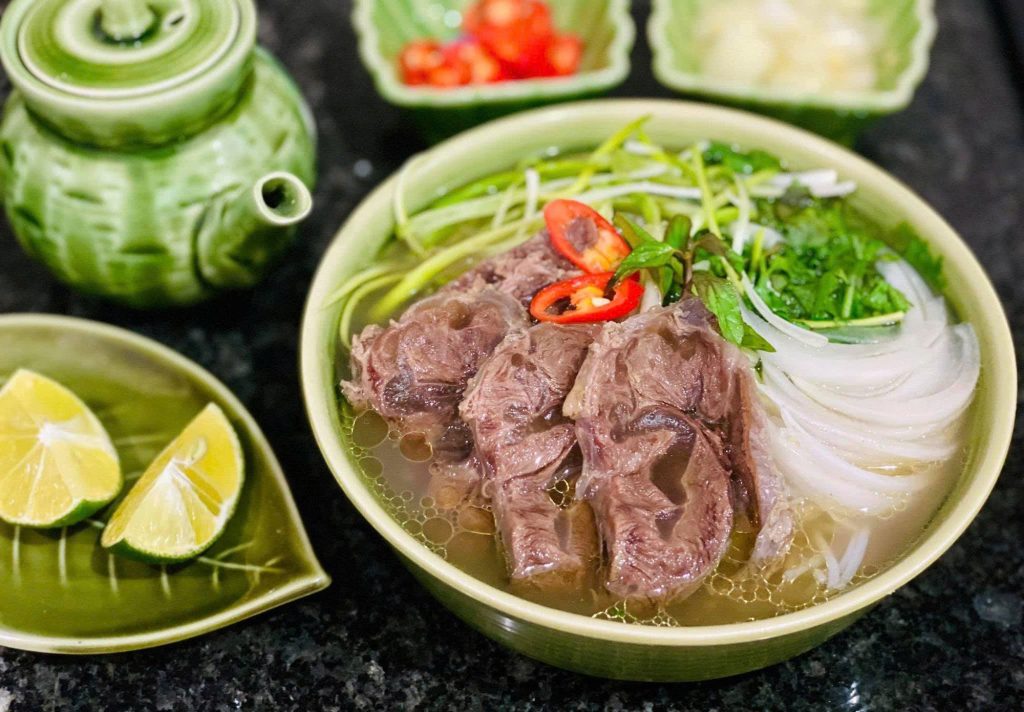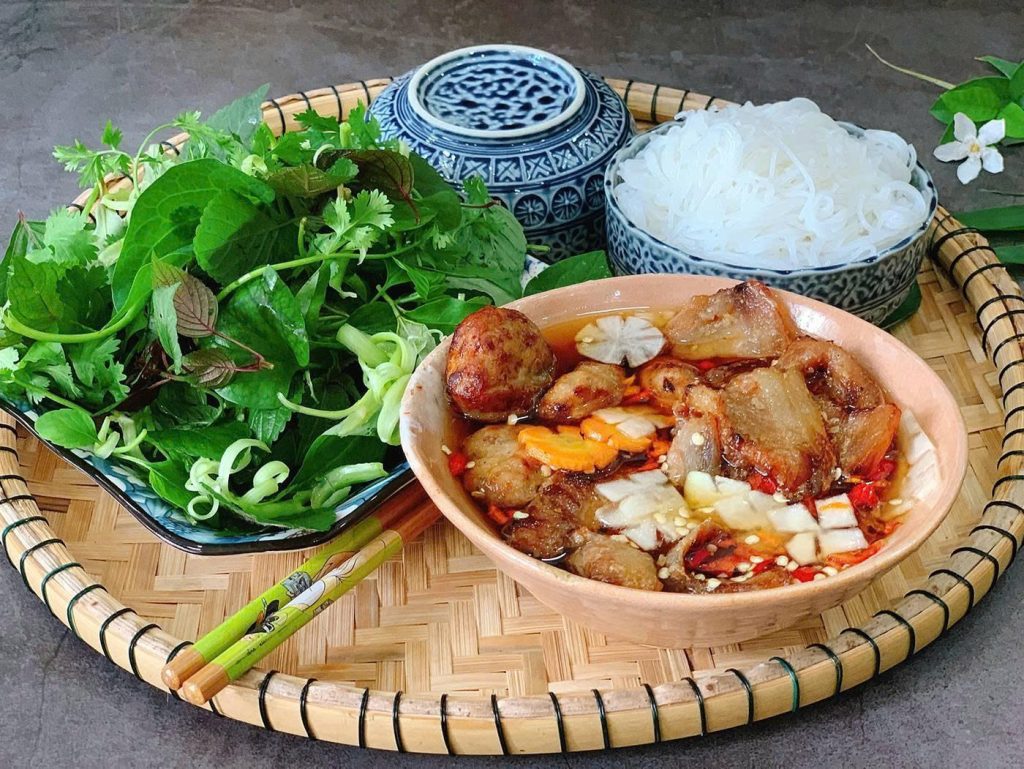Ho Chi Minh City (formerly Saigon) is not just a bustling metropolis; it’s a sensory symphony, and nowhere is that more evident than in its legendary street food scene. Are you ready to dive into a world of vibrant flavors, fragrant spices, and unique culinary traditions? For any traveler, the ultimate bucket list activity is sampling the local fare. This guide cuts through the noise to bring you the definitive list of the Must Try Foods in Ho Chi Minh City that will leave your taste buds wanting more. Get ready for an unforgettable gastronomic journey!
What Makes Saigon a Foodie Paradise?
To understand Saigon’s food is to understand its history and geography. The city’s cuisine is a complex and exhilarating confluence shaped by several key factors:
1. The Mekong Delta’s Abundance
Ho Chi Minh City is the gateway to the fertile Mekong Delta. This proximity guarantees an endless supply of pristine, fresh ingredients: river fish, plump shrimp, a staggering variety of tropical fruits, and, crucially, a wealth of fresh herbs and vegetables. Southern Vietnamese cooking is characterized by this abundance and freshness, leaning on slightly sweeter, bolder flavor profiles compared to the more subtle central or northern cuisines, largely thanks to the generous use of coconut milk, sugar, and various tropical seasonings.
2. French Colonial Influence
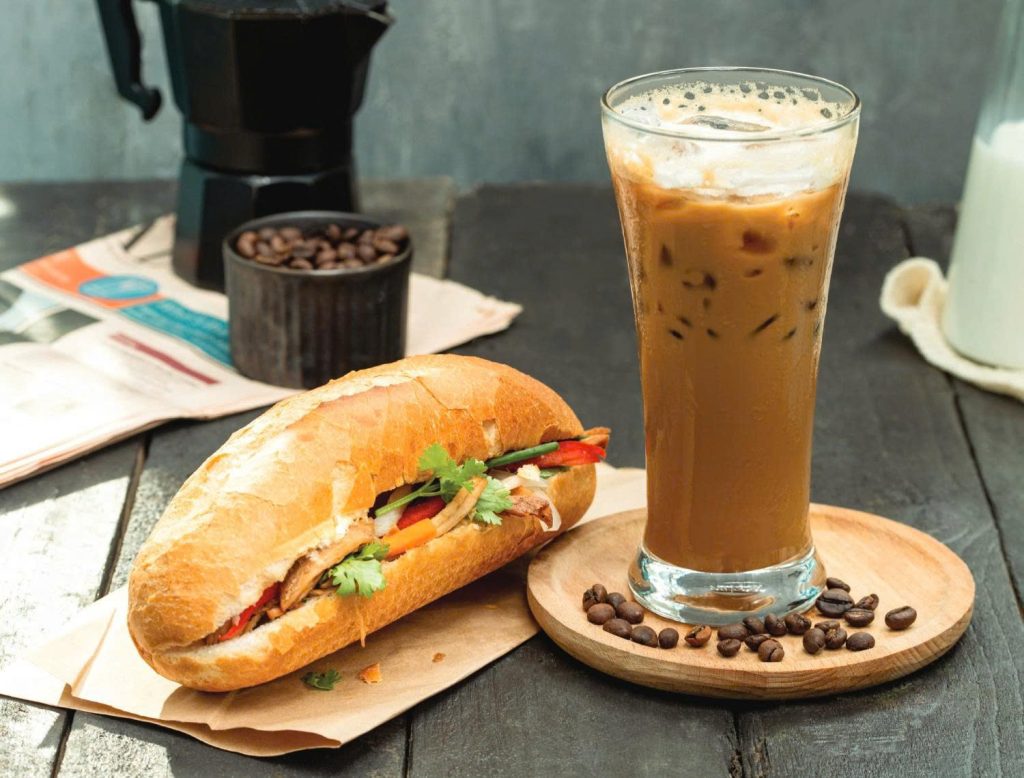
The French occupation left an indelible mark, most famously manifesting in the Bánh Mì (the baguette) and the robust, condensed milk-sweetened Cà Phê Sữa Đá (iced coffee). These aren’t mere adaptations; they are perfect cultural fusions, where French culinary structure met Vietnamese ingredients and technique to create something entirely new and unique.
3. A Melting Pot of Regional and International Cuisine
Saigon serves as the culinary crossroads of Vietnam. Dishes from the North (like Phở) and the Central region (like Bún Bò Huế) have migrated here, where they are reinterpreted through a Southern lens, resulting in a rich, diverse, and competitive food landscape. Furthermore, the historical influence of Chinese, Khmer, and Cham communities adds layers of complexity, visible in dishes like Hủ Tiếu Nam Vang.
4. The Culture of Street Eating
In Saigon, eating is a public, social, and continuous activity. Meals aren’t confined to a dining room; they spill out onto the pavement. This constant turnover and competitive environment ensures that street food vendors maintain exceptionally high standards of quality and flavor, as they rely entirely on immediate local approval.
Must-Try Main Dishes and Iconic Noodle Soups
The heart of the Saigon diet lies in its hearty, aromatic noodle soups and its perfectly balanced savory rice and bread dishes.
1. Bánh Mì: The World’s Greatest Sandwich
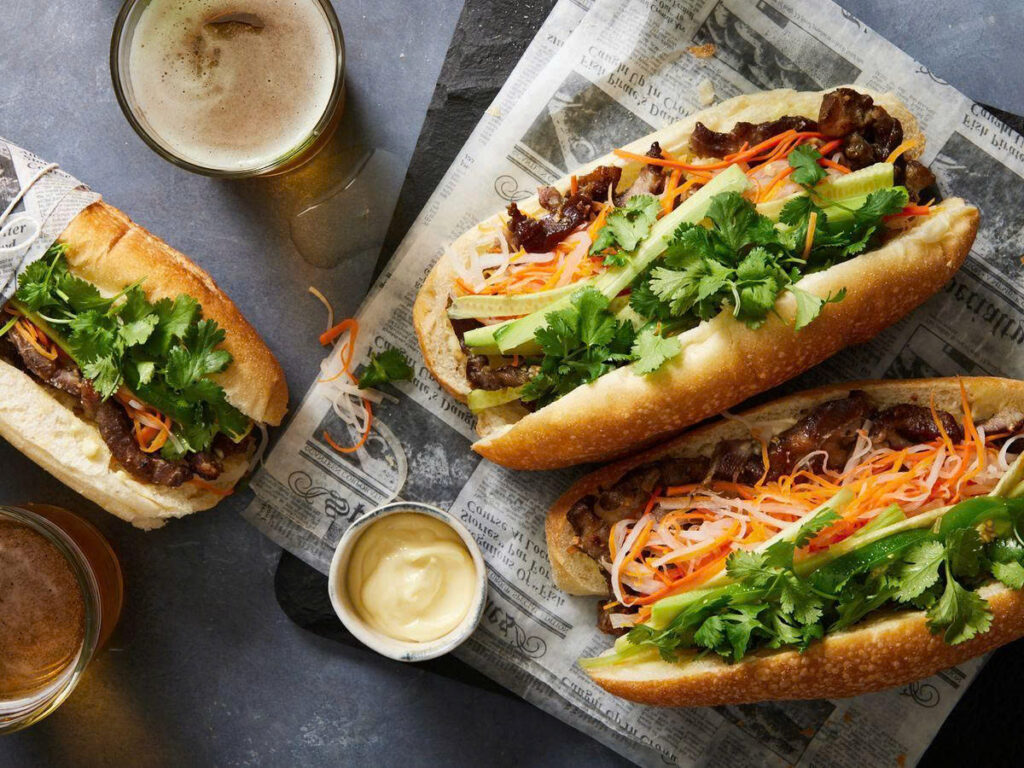
The Bánh Mì is not just a sandwich; it’s a cultural icon, a flawless synergy of East meets West. Its foundation is the baguette, a legacy of the French colonial era, but the Vietnamese version is lighter, airier, and boasts a supremely thin, shatteringly crispy crust, perfect for soaking up savory juices without becoming soggy.
The most classic and popular variation is Bánh Mì Thịt Nguội/Chả Lụa (cold cut/pork roll sandwich), often called Bánh Mì Đặc Biệt (Special Bánh Mì). A typical build includes:
- Pâté: A rich, savory liver pâté, often pork-based, slathered on the inside of the baguette.
- Mayonnaise/Butter: A creamy, often homemade, spread.
- Thịt Nguội (Cold Cuts): Slices of Chả Lụa (Vietnamese pork sausage), ham, or head cheese (giò thủ).
- Protein: For the Special, it’s cold cuts, but alternatives include grilled pork (thịt nướng), chicken (gà), or braised pork (heo quay).
- Pickled Vegetables (Đồ Chua): Shredded carrots and daikon radish, providing a crucial, tangy crunch to cut through the richness.
- Herbs: Cilantro (coriander) and sometimes mint.
- Heat: Slices of fresh chili or a spicy chili sauce.
The sheer variety is staggering. From the humble, butter-and-sugar Bánh Mì Bơ Đường to the elaborate Bánh Mì Chảo (a sizzling platter of eggs, sausage, and pâté served with a baguette), the Bánh Mì universe is vast.
Highly-Rated Bánh Mì Spots:
- Bánh Mì Huỳnh Hoa: Famous for its extraordinarily generous fillings and rich, creamy spreads. It’s often considered the gold standard, though you may face a queue. (26 Lê Thị Riêng, District 1)
- Bánh Mì Bà Huynh: A strong local alternative known for quality cold cuts. (185K Cống Quỳnh Street, District 1)
- Bánh Mì Thịt Nướng Nguyễn Trãi: For those who prefer a hot, grilled option, this spot offers tender, marinated pork fresh off the grill. (37 Nguyễn Trãi, District 1)
RELATED: Best Banh Mi in Ho Chi Minh City: Saigon’s Iconic Sandwich Guide
2. Phở: The Soul of Vietnam, Refined in the South

While Phở has its roots in Northern Vietnam (Hanoi), its presence in Ho Chi Minh City is equally important, marked by a distinct Southern style. Saigon Phở is generally sweeter, richer, and served with a much more extensive plate of accompanying garnishes than its Northern counterpart.
The difference is noticeable:
- Broth: Saigon Phở broth is often clearer but has a deeper layer of sweetness, achieved through longer simmering of beef bones, and a more pronounced presence of warming spices like star anise and cloves.
- Garnishes: The most significant difference. Hanoi Phở is minimalist—a few spring onions and cilantro. Saigon Phở comes with a generous plate of fresh herbs like culantro (ngò gai), basil, bean sprouts, and sliced chilies, allowing the diner to customize the bowl’s flavor and texture.
- Condiments: Southern tables always feature bottles of rich Hoisin sauce and tangy Sriracha, often added directly to the broth or used as a dipping sauce for the meat.
Top-Rated Phở Restaurants:
- Phở Lệ: A legendary institution, known for its thick, fatty, and deeply satisfying broth. It is a benchmark for Saigon-style Phở. (415 Nguyễn Trãi, District 5)
- Phở Hòa Pasteur: Highly popular with tourists and locals alike, this spot is a masterclass in clean, flavorful broth and perfectly cooked noodles. (260C Pasteur Street, District 3)
- Phở Hùng: Offers a more modern, comfortable setting but maintains classic, high-quality flavor. (243 Nguyễn Trãi, District 1)
RELATED: Where to Eat Pho in Ho Chi Minh City: Saigon’s Iconic Bowl
3. Cơm Tấm: The Rustic Broken Rice Staple
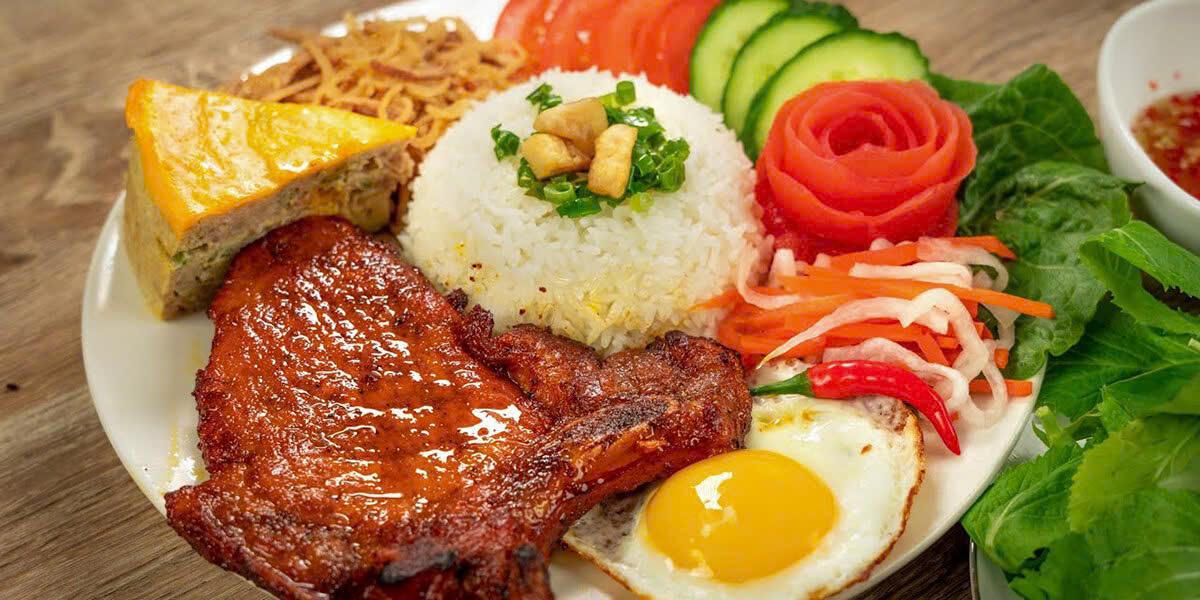
Cơm Tấm, or “broken rice,” is a quintessential Southern Vietnamese dish, born out of frugality and necessity. Broken rice grains (tấm), once considered inferior and only affordable by the poor, were transformed into a culinary star. It is the city’s beloved comfort food, often eaten for breakfast, lunch, or dinner.
The dish is a harmonious assembly of textures and flavors on a bed of fluffy, slightly smaller broken rice grains:
- Sườn: A massive, thin cut of grilled pork chop, marinated in a sweet, savory, and garlicky sauce and grilled over charcoal until slightly charred and caramelized. This is the centerpiece.
- Bì: Finely shredded pork skin mixed with roasted rice powder, adding a chewy texture and nutty flavor.
- Chả Trứng Hấp: A savory, steamed egg and pork loaf, similar to a terrine, sometimes containing wood ear mushrooms.
- Trứng Ốp La: A simple fried egg, often with a runny yolk.
- Mỡ Hành: A flavorful, bright green scallion oil poured over the rice.
- Nước Chấm: The most critical component: a sweet, sour, salty, and spicy fish sauce that is poured liberally over the entire plate.
The combination of the rich pork, the delicate egg cake, the savory-sweet sauce, and the satisfying texture of the broken rice makes Cơm Tấm a perfectly balanced meal.
Recommended Cơm Tấm Eateries:
- Cơm Tấm Phúc Lộc Thọ: A modern, chain operation that offers consistently high quality and cleanliness. (Multiple locations).
- Cơm Tấm Mộc: Known for a more authentic, traditional presentation and excellent grilled pork. (85 Lý Tự Trọng, District 1).
- Cơm Sườn Bà Cường: A local favorite focusing almost entirely on the quality of their marinated and grilled pork chop. (263 Trần Quang Khải, District 1).
4. Hủ Tiếu Nam Vang: The Cambodian-Vietnamese Noodle Marvel
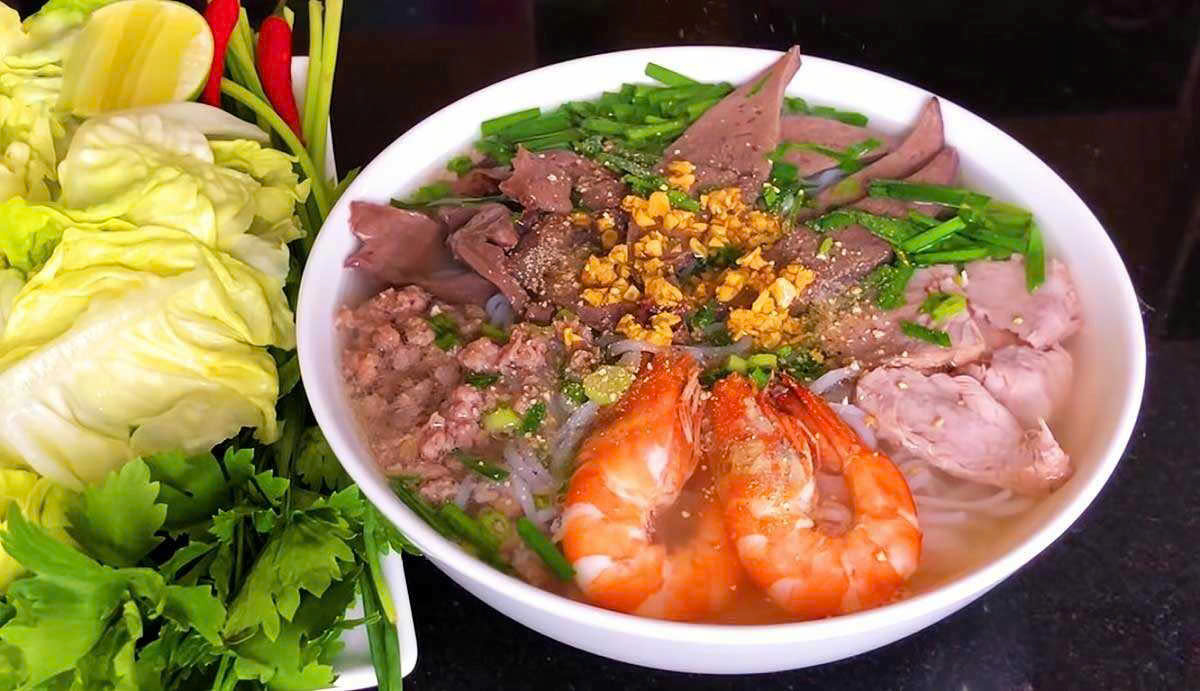
Hủ Tiếu is a noodle soup with Cambodian-Chinese origins, and the Nam Vang (Phnom Penh) style is the most popular in Saigon. It is distinguishable from Phở by its use of various types of noodles and its specific, often clearer, pork-based broth.
Diners are typically asked two questions when ordering:
- Which Noodle? Options include thin rice noodles (Hủ Tiếu), chewy tapioca noodles (Hủ Tiếu Dai), or egg noodles (Mì). You can also request a mix (Thập Cẩm).
- Wet or Dry?
- Nước (Wet/Soup): The noodles and toppings are served submerged in the savory broth.
- Khô (Dry): The noodles are tossed in a special, sweet, and oily sauce, and the broth is served separately on the side. This is often the preferred, more flavorful way to enjoy the dish.
The soup is characterized by its generous toppings: shrimp, sliced pork, minced pork, pork offal (liver, heart, etc.), and a quail egg, all garnished with crispy fried garlic and fragrant Chinese chives. The broth is often richer and slightly sweeter than Phở broth.
Popular Hủ Tiếu Nam Vang Restaurants:
- Hủ Tiếu Nam Vang Nhân Quán: A well-established chain known for its consistent quality and generous portions. (122D Cách Mạng Tháng 8, District 3).
- Hủ Tiếu Nam Vang Quỳnh: A highly popular spot, famous for its intense “dry” noodle sauce. (A65 Nguyễn Trãi, District 1).
5. Bún Bò Huế: The Spicy, Bold Central Challenger

From the ancient imperial city of Huế, Bún Bò Huế (Hue-Style Beef Noodle Soup) is the fiery, robust cousin to the more delicate Phở. It has found a wildly receptive audience in Saigon, which has adopted and slightly sweetened the Central Vietnamese original.
This is a soup defined by its intense, complex flavors:
- Broth: The broth is rich, red, and spicy, derived from simmering beef bones with lemongrass, chili oil, and a crucial, aromatic touch of mắm ruốc (fermented shrimp paste). The shrimp paste provides a deep, umami funk that is essential to the dish’s character.
- Noodles: Thicker, rounder vermicelli noodles (bún) are used, giving the dish a heavier, more substantial mouthfeel than the flat Phở noodles.
- Toppings: Includes thick slices of beef shank, slow-cooked pork trotters (pig knuckles), and often a savory, gelatinous cube of huyết (congealed pig’s blood).
- Serving: Like Phở, it is served with a plate of raw herbs, shredded banana blossom, and often a squeeze of lime to cut through the richness.
Bún Bò Huế is a powerful, addictive experience that stands shoulder-to-shoulder with Phở as a Vietnamese national treasure.
Highly-Recommended Bún Bò Huế Restaurants:
- Bún Bò Huế Đông Ba: A respected establishment in the heart of District 1, known for maintaining the traditional balance of the Huế flavor profile. (207B Nguyễn Văn Thủ, P. Đa Kao, Quận 1, TP. HCM)
- Bún Bò Huế Bà Nghị: A solid local spot that is often cited for its authentic, pungent broth. (466 Nguyễn Tri Phương, District 10)
6. Bún Riêu: The Tangy, Tomatoey Crab Noodle Soup
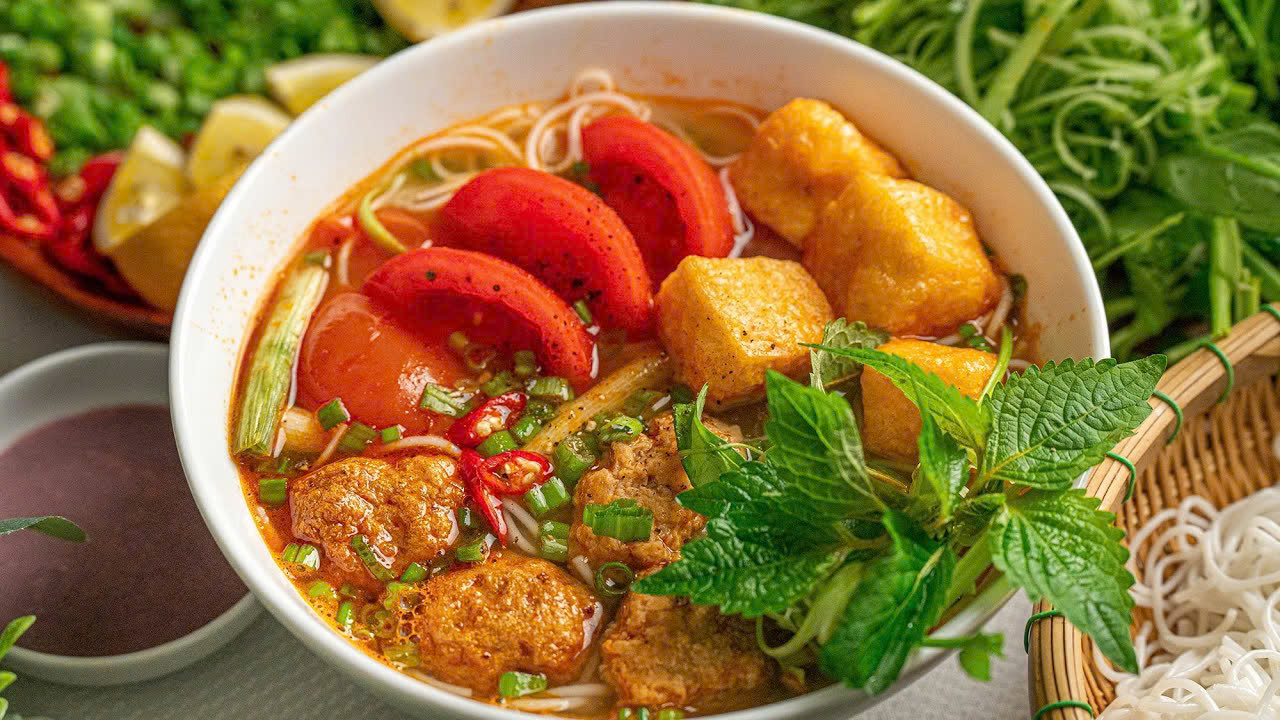
Bún Riêu is a bright, tangy, and deeply satisfying noodle soup that is a staple of Southern Vietnamese cuisine, particularly popular for a light lunch or mid-day meal.
The star of the show is the riêu—the crab mixture. Freshwater paddy crabs are meticulously cleaned, pounded, and strained, and their essence is used to form the flavor base of the broth. The mixture also includes egg and is cooked until it forms delicate, savory clusters or “cakes” that float in the soup.
- Broth: The broth has a distinctive color and flavor, achieved by adding tomatoes and sometimes a splash of vinegar or tamarind, giving it a characteristic tartness and a pleasingly rich, reddish hue.
- Toppings: In addition to the crab cake, the soup often includes ốc (snail), fried tofu, pork knuckles, and sometimes chả lụa (pork roll).
- Condiments: A small spoon of mắm tôm (fermented shrimp paste) is often stirred in by the diner to deepen the funky, umami profile.
Bún Riêu is a complex, refreshing, and incredibly addictive soup.
Popular Bún Riêu Spots:
- Bún Riêu Gánh Chợ Bến Thành: Famous for being a street vendor-style spot near the market, serving up a high-quality bowl with generous toppings. (163 Lê Thánh Tôn Street, District 1)
- Bún Riêu Nguyễn Cảnh Chân: A local favorite tucked away, celebrated for its robust, well-balanced broth. (TK18/5 Nguyễn Cảnh Chân Street, District 1)
Saigon’s Signature Street Food and Savory Delights
Beyond the soups, Saigon excels in unique, localized savory dishes that showcase its innovative approach to street-side cooking.
7. Ốc: The Ultimate Street Snails and Seafood Experience
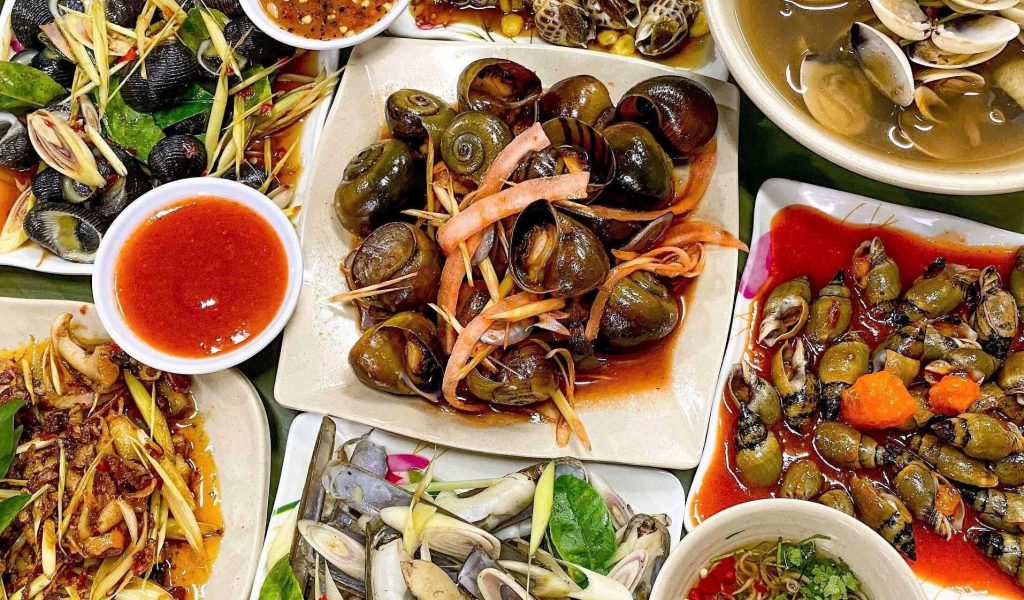
The Ốc (snails and shellfish) scene is arguably the most vibrant and unique aspect of Saigon’s late-night street food culture. Entire streets, most famously Vĩnh Khánh in District 4, transform nightly into buzzing, open-air seafood restaurants where dozens of types of mollusks and shellfish are prepared in countless ways.
The term Ốc is a catch-all for a variety of snails, clams, and cockles, each cooked to order. The preparation methods are bold and flavorful:
- Ốc Hương (Fragrant Snails): Often grilled with butter, garlic, and chili.
- Ốc Móng Tay (Razor Clams): Stir-fried with morning glory (rau muống) and garlic or grilled with scallion oil.
- Nghêu (Clams) or Sò Điệp (Scallops): Grilled with rich, creamy phô mai (cheese) or a tangy tamarind sauce (me).
Eating Ốc is a social ritual—you sit on a low stool, often with a group, order a spread of several dishes, and pair the spicy, savory flavors with cold local beer (like Saigon Special).
Highly-Rated Ốc Restaurants:
- Ốc Đào: A highly popular, centrally located spot famous for its variety and consistent quality. (212B/D48 Nguyễn Trãi Street, District 1)
- Ốc Oanh – District 4: Located on the famous Vĩnh Khánh ‘Ốc Street,’ this vendor is known for its incredible atmosphere and skillful preparation. (534 Vĩnh Khánh Street, District 4)
8. Bánh Xèo: The Sizzling, Savory Pancake
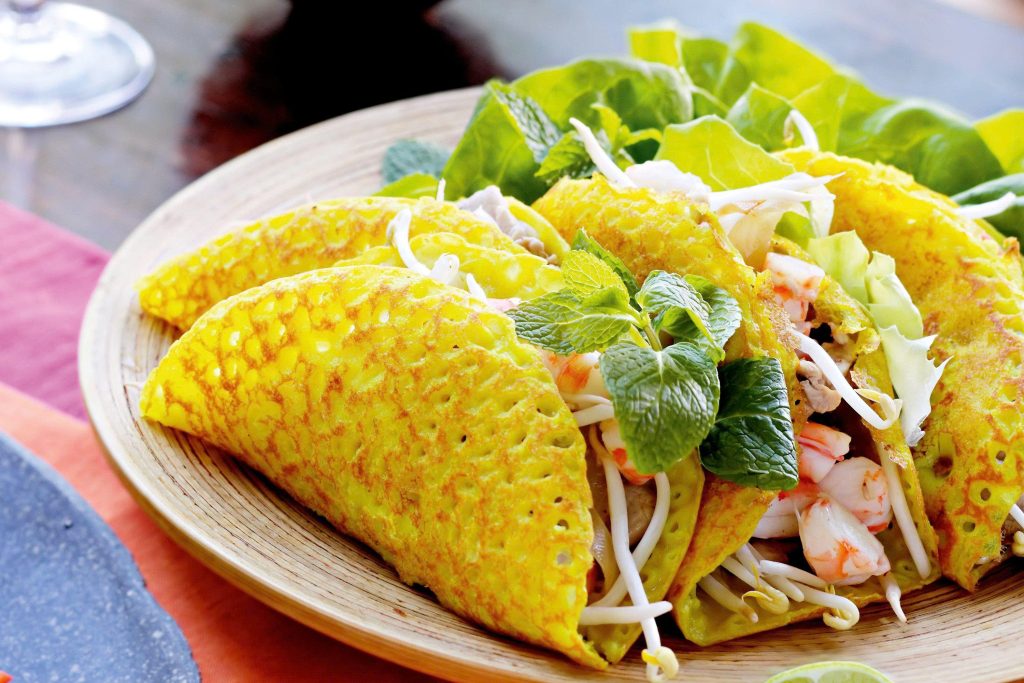
Bánh Xèo is a visually spectacular dish, named for the sizzling sound (xèo) the batter makes when it hits the hot wok. It is a large, thin, crispy crepe-like pancake, bright yellow from a dash of turmeric mixed into the rice flour batter.
The pancake is filled with bean sprouts, shrimp, slivers of pork belly, and sometimes mung beans. The eating process is a delightful, hands-on ceremony:
- Tear: Break off a manageable piece of the crispy pancake.
- Wrap: Place the piece of Bánh Xèo onto a large leaf of lettuce.
- Garnish: Top with fresh herbs like basil, mint, and perilla leaf.
- Roll: Tightly wrap the entire bundle into a cigar shape.
- Dip: Dunk the roll into the sweet-sour nước chấm (fish sauce dressing).
The result is a perfect explosion of flavors and textures: hot, crunchy, cool, fresh, savory, and tangy.
Famous Bánh Xèo Eateries in HCMC:
- Bánh Xèo 46A (Bánh Xèo Bà Hai): While the original location may have moved or changed, the style is known for a classic, large, and satisfyingly crispy pancake. (49 Nguyễn Trọng Tuyển Street, Phú Nhuận District)
- Bánh Xèo An La Ghien: A well-known spot that offers a cleaner environment and excellent filling-to-crust ratio. (11A Tú Xương Street, District 3)
9. Phá Lấu Bò: The Rich and Creamy Beef Offal Stew
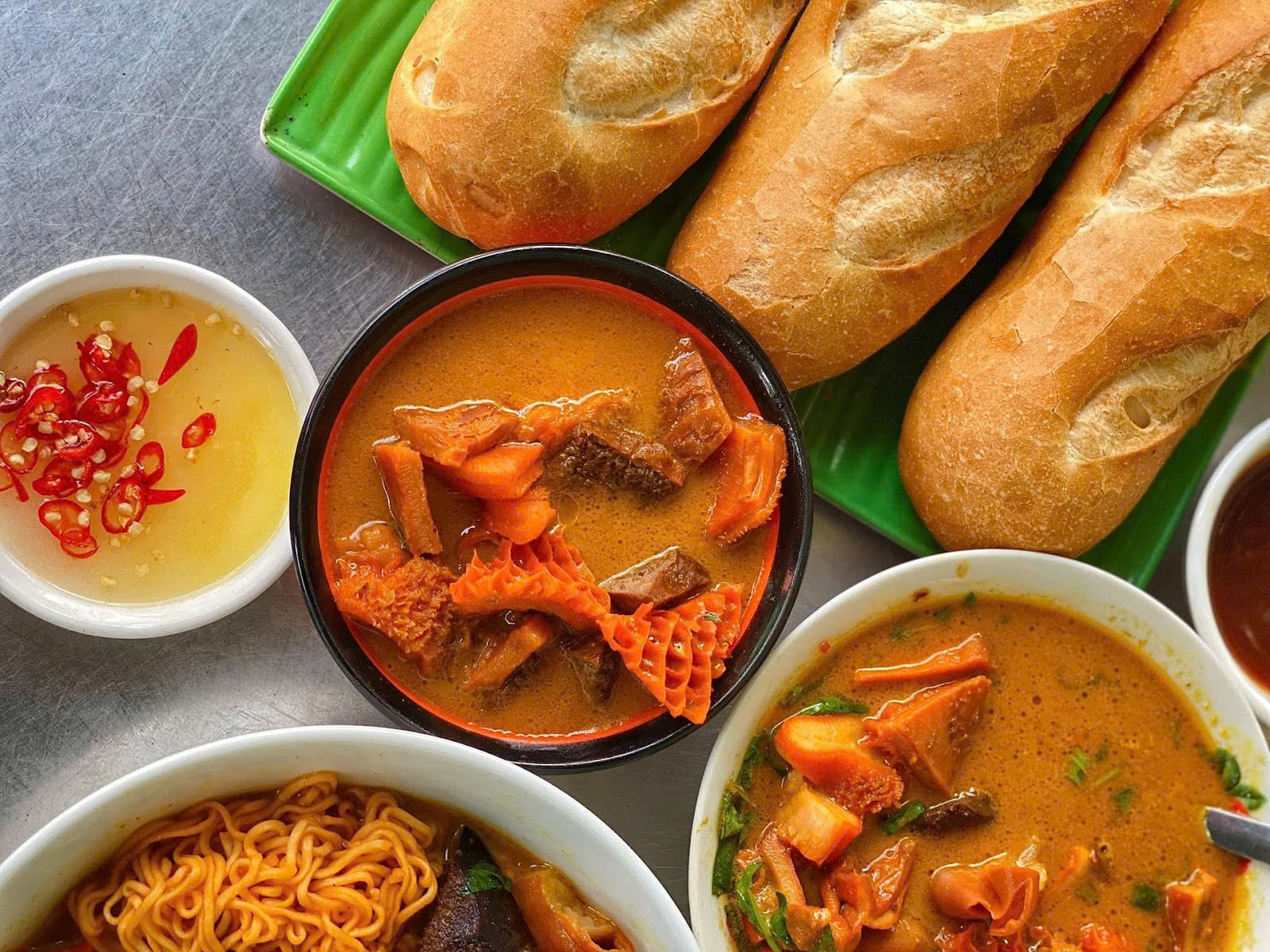
Phá Lấu Bò is a deeply cherished local snack, particularly among students and young people. It is the epitome of the “nose-to-tail” cooking philosophy that defines resourcefulness in Vietnamese cuisine.
Phá Lấu is a stew of various beef offal (tripe, lungs, intestines), which are meticulously cleaned and slow-cooked in a rich, savory, and slightly sweet broth that is heavily based on coconut milk and five-spice powder. The long simmer tenderizes the offal and allows it to absorb the aromatic broth.
- Serving Style: It is often served piping hot with either fresh, warm Bánh Mì (for dipping) or with a bowl of instant noodles, making it a hearty and affordable meal.
- Dipping Sauce: The essential accompaniment is a small saucer of thick, tangy tamarind dipping sauce, which cuts through the richness of the coconut milk and offal.
It’s a dish that exemplifies the bold, balanced, and textural nature of Saigon’s street food.
Popular Phá Lấu Bò Stalls:
- Phá Lấu Lì: A famous, popular spot in District 1 known for its creamy, flavorful broth and tender offal. (1A Sương Nguyệt Ánh Street, District 1)
10. Bún Thịt Nướng: The Charred Pork Vermicelli Bowl
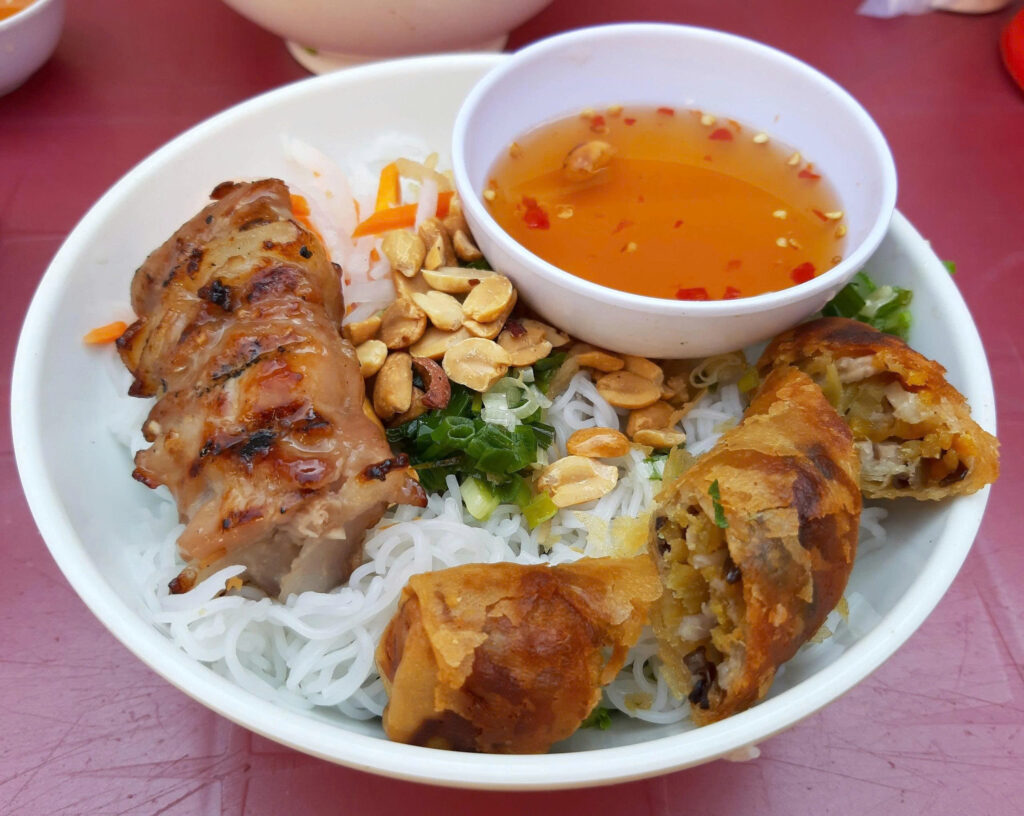
Bún Thịt Nướng is a glorious cold noodle salad that perfectly embodies the light, fresh, and balanced flavors of Southern cuisine. It is the ideal antidote to a hot Saigon afternoon.
Unlike the hot noodle soups, Bún Thịt Nướng is a dry dish, a complete salad assembled in a bowl:
- Bún (Vermicelli): Cold, fresh rice vermicelli noodles form the base.
- Thịt Nướng (Grilled Pork): Slices of tender, marinated pork, grilled over charcoal until beautifully caramelized and smoky. This is often cooked with tiny patties of grilled meat (chả).
- Chả Giò (Spring Rolls): Crispy, deep-fried pork or shrimp spring rolls, sliced diagonally, adding a crucial crunch.
- Đồ Chua & Rau Thơm: A generous scattering of fresh herbs (mint, lettuce, etc.) and pickled carrots and radish.
- Đậu Phộng (Peanuts): Crushed, roasted peanuts for texture.
- Nước Chấm: The entire dish is brought to life by a large amount of lukewarm nước chấm (fish sauce dressing) poured over the top just before eating.
The key is to mix everything thoroughly, ensuring every bite contains a complex interplay of hot and cold, soft and crunchy, sweet, sour, salty, and savory.
Recommended Bún Thịt Nướng Spots:
- Bún Thịt Nướng Kiều Bảo: A highly regarded local chain known for its high-quality spring rolls and tender, flavorful grilled pork. (12-14 Tô Hiến Thành Street, District 10)
- Bún Thịt Nướng Chị Tuyền: A District 1 favorite known for its smoky grilled meat and excellent sauce. (175C Cô Giang Street, District 1)
The Essential Drinks and Desserts
No culinary journey is complete without sampling the iconic beverages and sweet endings that define Saigon’s everyday life.
11. Chè: The Spectrum of Vietnamese Sweet Soups
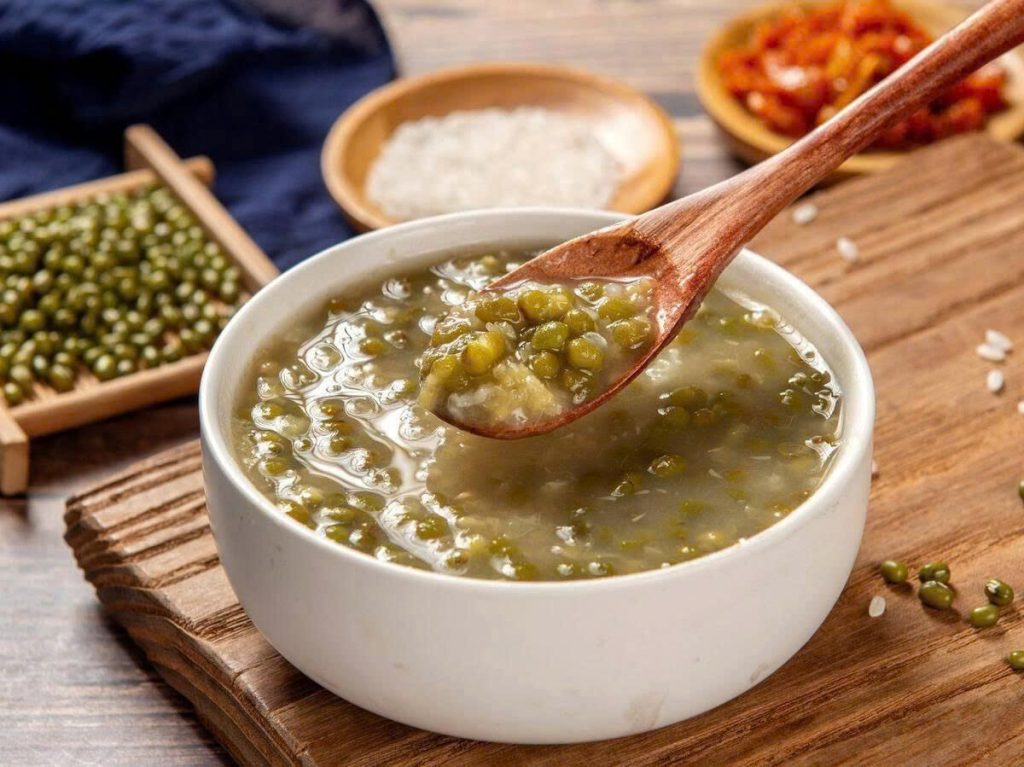
Chè is the term for a vast and diverse category of Vietnamese sweet soups, puddings, and drinks, which serve as the perfect relief from the tropical heat. They are a testament to the Vietnamese love for fresh, often unconventional ingredients in their desserts.
Chè can be served hot or cold, but in Saigon, it is overwhelmingly served over crushed ice (Chè Đá). Varieties include:
- Chè Ba Màu (Three-Color Dessert): A classic blend of three colored layers (usually green pandan jelly, yellow mung bean paste, and red beans) topped with creamy coconut milk and crushed ice.
- Chè Đậu (Bean Soups): Simple but delicious soups made from black beans, red beans, or mung beans, sweetened and served with coconut milk.
- Chè Chuối (Banana Sweet Soup): Warm, thick, and creamy, made from sliced banana simmered in coconut milk and sago pearls.
- Chè Thái (Thai Sweet Soup): A popular import, typically featuring various tropical fruits and jellies in coconut milk.
Chè stands are ubiquitous, colorful, and a mandatory stop for any sweet tooth.
12. Cà Phê Sữa Đá: The Iconic Iced Coffee
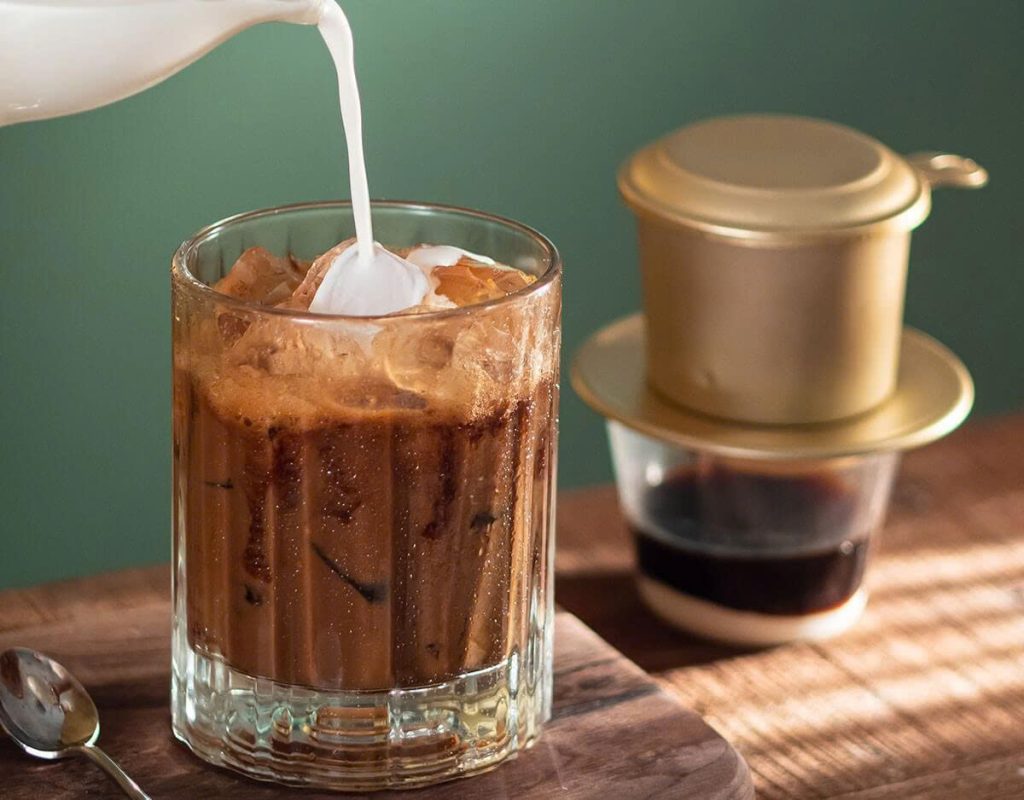
Cà Phê Sữa Đá (Iced Milk Coffee) is not just a drink; it is a vital part of Saigon’s social and economic fabric, serving as the essential fuel for the city’s ceaseless energy.
The coffee is traditionally a strong, dark-roasted Robusta bean, known for its high caffeine and bold, chocolatey flavor. It is prepared using a small, metal phin filter, which slowly drips the hot coffee, one drop at a time, into a glass containing a thick layer of Sữa Đặc (sweetened condensed milk).
- Preparation: The condensed milk provides the necessary sweetness and creamy texture to balance the harshness of the Robusta coffee.
- Serving: Once the brewing is complete, the concentrated mixture is stirred and poured over a tall glass packed with ice.
The result is a powerhouse beverage—sweet, bitter, intensely caffeinated, and refreshingly cold. For a non-dairy option, try Cà Phê Đen Đá (Iced Black Coffee).
RELATED: The Best Cafes in Ho Chi Minh City: Saigon’s Coffee Guide
Ho Chi Minh City Food Tour Tips from a Local Expert
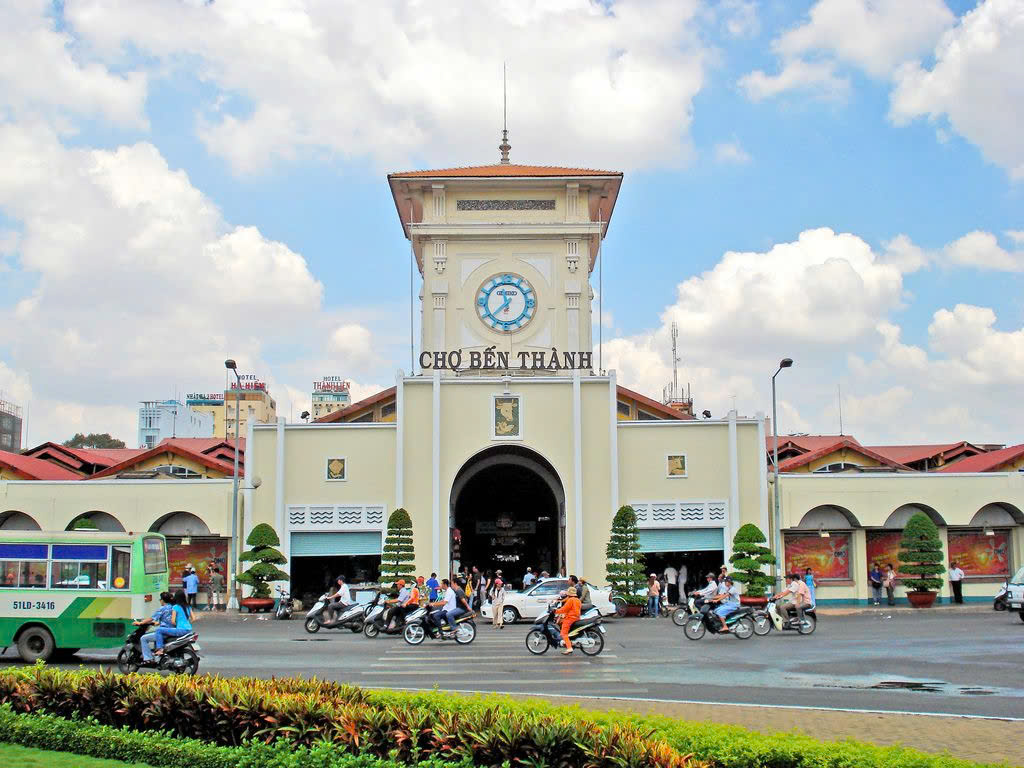
To maximize your culinary adventure and truly immerse yourself in the Saigon food scene, keep these essential tips in mind:
1. Embrace the Stool and the Sidewalk
The best, most authentic, and freshest food in Saigon is found at sidewalk stalls. Don’t be shy about sitting down on the iconic low, plastic stools (ghế nhựa). The bustling, slightly chaotic atmosphere is part of the charm and the guarantee of a high-turnover, high-quality dish.
2. Customize Your Bowl
Vietnamese food is meant to be seasoned to taste. Don’t hesitate to use the condiments provided:
- Lime/Chili: Always squeeze the lime wedge and add sliced chili to your noodle soups.
- Herbs: Use the entire plate of herbs and vegetables provided. They are crucial for texture and aroma.
- Sauces: Use Hoisin or Sriracha for Phở, but be mindful when adding mắm ruốc (fermented shrimp paste) to Bún Bò Huế or Bún Riêu—it is potent!
3. Learn the Essential Phrases

While many central vendors speak English, a few Vietnamese words will enhance your experience:
- “Cho tôi một cái…” (Chaw toy mot kai): “Give me one…”
- “Nước chấm”: The dipping sauce (often you’ll want more).
- “Không cay” (Kong kai): “Not spicy.”
- “Cảm ơn” (Kam uhn): “Thank you.”
4. Safety and Hygiene: Trust Your Senses
A common concern is street food hygiene. Generally, if a stall is busy and has a high turnover of customers (especially locals), the ingredients are fresh.
- Look for Hot: Ensure that soups are served piping hot and grilled items are cooked to order.
- Cleanliness: Observe the preparation area. A tidy, if chaotic, setup is a good sign.
- Hydrate Safely: Stick to bottled water or well-known brands of iced drinks (Nước Mía—sugarcane juice—is usually safe, as it’s freshly pressed). Avoid tap water.
5. Cash is Always King
While some modern eateries accept cards, the vast majority of street stalls and small quán (eateries) are cash-only. Always have small denominations of Vietnamese Đồng (VND) on hand, as vendors often don’t have change for large notes.
RELATED: Ho Chi Minh City Guide 2026: Culture, Food & Nightlife
Ho Chi Minh City’s food scene is a testament to the resilience, creativity, and sheer passion of its people. Every bowl of Phở, every crunch of a Bánh Mì, and every sip of Cà Phê Sữa Đá tells a story of tradition, adaptation, and an unwavering commitment to flavor.
This guide is your roadmap to experiencing the city not as a tourist, but as a culinary adventurer. Don’t just check off the list; engage with the vendors, embrace the organized chaos, and allow the vibrant, bold flavors of Saigon to leave an indelible mark on your palate.
Note: For the best possible experience, we strongly recommend doing a quick search on Google Maps or through popular food delivery/review apps (Foody or GrabFood) immediately before your trip. This will help you confirm the most accurate opening hours and addresses, which is especially crucial for street food vendors or locations with slightly complex addresses. Also, do not hesitate to try any small, bustling street stall you pass—if the locals are lining up, the food is worth it.

